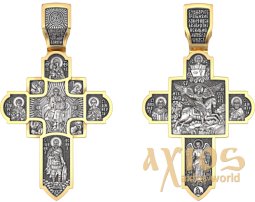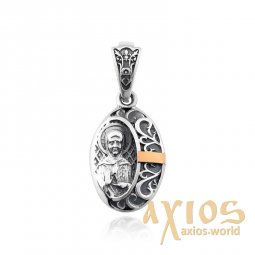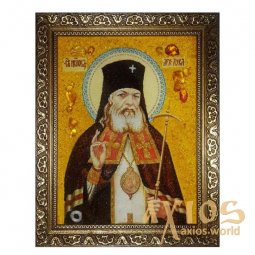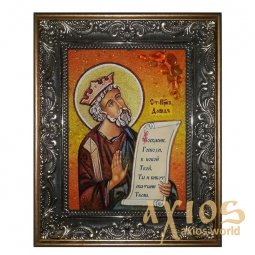The Monk Adrian Poshekhonsky is the hegumen, martyr for Christ, the miracle worker is glorified in the Cathedral of saints of Rostov and Yaroslavl.
St. Adrian was born in Rostov in the early 16th century. The exact date of his birth is unknown. We also know little about his parents and how his young years passed. It is known that already in his youth he became a deacon at the Korniliev Komel Monastery and carried the obedience of the icon painter. While the founder of the monastery was hegumen Cornelius, Adrian remained with him. But on his death, Adrian wished desertification and begged the new hegumen, Lavrenty, to release him to another place. Lavrenty blessed him and the novice Leonid and dismissed them in peace.
Adrian and his companion went to Poshekhonsky district and there they chose a place for a solitary monastic residence. In September 1539, in the forest, they built a hut that was the beginning of a new monastery. Gradually, around her began to settle other brethren who want a solitary feat. After a while, they were enough to form a real monastery. Adrian went to Moscow and received a permit from Metropolitan Makarios for the Father Superior, and after a while the first temple of the monastery, the Assumption of the Blessed Virgin, was built and consecrated. At the end of construction, Adrian's faithful companion Leonid died.
St. Adrian devoted a lot of time to prayer, icon painting and pastoral work.
The monastery was gradually built and strengthened, the number of brethren increased, but evil envious persons appeared. On the night of March 6, 1550, a band of robbers attacked the monastery. They tortured Hegumen Adrian and killed him. He betrayed the soul of the Lord by forgiving his tormentors. The cruel barbarians looted the Assumption Church, killed several other monks, mocked the shrines. When they left, they took the body of St. Adrian and threw him away from the monastery, intending to burn it later, but their plans were prevented by a certain peasant Isidor, who managed to take away and secretly bury the monk. Only 70 years later was found his grave, and the robbers were soon caught and severely punished.
A beautiful wooden icon with an image executed in the canonical style under the antiquity. The technique of manufacturing completely imitates old icons. The front surface is varnished. The frame is made of natural wood. Compact and convenient to take with you on a journey, pilgrimage or add it to your home iconostasis.
Material: natural wood, paint, varnish, lithography
Production time: about 7 days
We can make any canonical triple fold in the style of "antique" on your order: the images of the Savior, the Blessed Virgin, Saints or Orthodox holidays. The price does not change.









